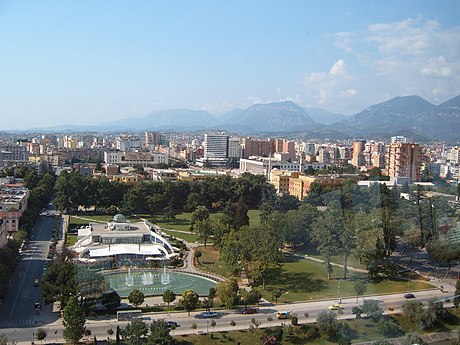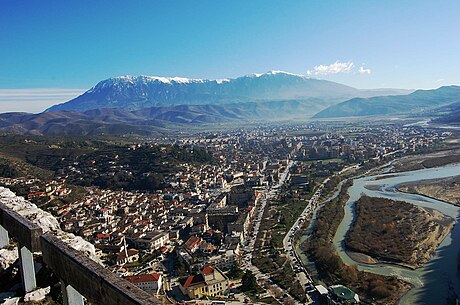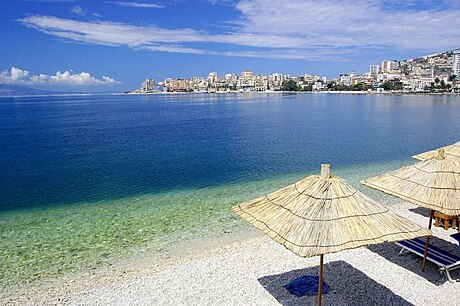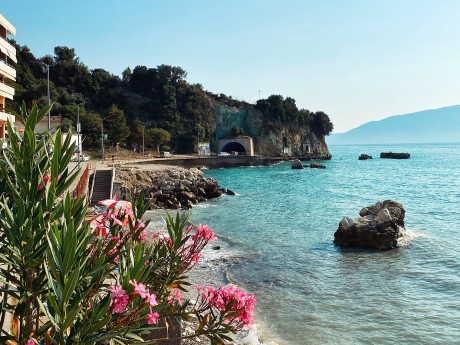Albania: Tirana, Berat, Vlore
Embark on a diverse journey through Albania, exploring the vibrant cities of Tirana, Berat, and Vlore. Tirana, the capital, boasts a blend of historical landmarks. Explore Skanderbeg Square, immerse yourself in the local culture at the National History Museum, and enjoy the lively atmosphere of the Grand Park. Berat, a UNESCO World Heritage site, invites discovery with its well-preserved Ottoman architecture and a maze of cobbled streets.
Read more
Embark on a diverse journey through Albania, exploring the vibrant cities of Tirana, Berat, and Vlore. Tirana, the capital, boasts a blend of historical landmarks. Explore Skanderbeg Square, immerse yourself in the local culture at the National History Museum, and enjoy the lively atmosphere of the Grand Park. Berat, a UNESCO World Heritage site, invites discovery with its well-preserved Ottoman architecture and a maze of cobbled streets. Visit the Castle of Berat, a fortress on a hill with panoramic views of the city. Vlore, nestled along the Adriatic Sea, offers coastal beauty, historical significance, and sandy beaches. See the Independence Monument or stroll along the seaside promenade. From the lively energy of Tirana to the historical charm of Berat and the coastal allure of Vlore, Albania promises a rich tapestry of experiences, showcasing a unique blend of ancient traditions and modern aspirations. Waterviews strives to offer accommodation options within walking distance of water and/or in an area of touristic interest. Our prices include taxes (but excludes local tourist taxes). Customize your trip to your personal preferences with optional activities (hit the “Add Activities’’) or change hotels, etc. Contact us for customization at no extra cost at: Service@waterviewstravel.com
Destinations
- Tirana
- Berat
- Vlorë
Itinerary
Tirana

Tirana (Albanian: Tiranë) is the bustling and modern capital of Albania.
Read more
Tirana (Albanian: Tiranë) is the bustling and modern capital of Albania.
Additional Information
Sulejman Pasha Bargjini, a native feudal lord from Mullet, established the city in 1614. His first constructions were a mosque, a bakery and a hamam or Turkish bath. On 8 February 1920, Tirana was made the temporary capital by the Congress of Lushnje, and it was proclaimed the permanent capital on 31 December 1925.
Tourists usually find Tirana a beautiful and charming city, where the cosmopolitan and small town feeling is intertwined with a lively night life. Tirana is where the old and new Albania meet. Unpaved streets host brand new Land Rovers, iPhone-toting youngsters rub shoulders with street vendors peddling all manner of items, and gleaming glass towers look down on abandoned construction projects. However, Tirana suffers from pollution problems mainly due to the rapid increase in cars in the city and continuous construction. Long gone are the days when Tirana used to be subject to power outages almost daily and this made Tirana a noisy city as the lack of power and lack of traffic lights had cars navigating by honking their horns.
Today the situation has dramatically improved regarding power outages. Tirana is undergoing a major renovation from its communist days. Many of the ugly dull buildings have been repainted, but a lot of work is left to be done. English is rapidly gaining steam as the second language of the city with the youth, but many older residents also speak Italian.
The main business and entertainment area (not by coincidence) has become "The Block" (Blloku) which is the area where in the past, the communist leaders used to live under strict protection. Tirana is a youthful and lively town resonating constant energy. Locals prefer to hang out at the many cafes and main parks. A popular retreat is by cable car to Mount Dajti where one can get a panoramic view of the city from above.
Albanians are very hospitable towards foreigners, despite media frequently portraying them unfairly as thieves and mobsters. Tirana is very approachable if you're the adventurous type - crime is rare, if ever directed towards foreigners and the costs are very low by regional standards. The worst experience you may have is with erratic driving style of Albanians.
Tourist office
© Sourced from Wikivoyage
Berat

Berat is a city in Albania. In 2008 it was designated as a UNESCO World Heritage Site as it is a rare example of a well-preserved Ottoman town. It is one of the country's most beautiful towns, and is known as the "town of a thousand windows".
Read more
Berat is a city in Albania. In 2008 it was designated as a UNESCO World Heritage Site as it is a rare example of a well-preserved Ottoman town. It is one of the country's most beautiful towns, and is known as the "town of a thousand windows".
Vlorë

Vlorë is a city in Coastal Albania in Albania.
Read more
Vlorë is a city in Coastal Albania in Albania.
Additional Information
Vlore lies in the southwestern coastal region of Albania, at the southern end of the Adriatic Sea and the northern part the Ionian Sea. The Vlore coastline accounts for about 30% of the entire coast of Albania. The Albanian Riviera is nearby. It is 135 km from the capital city, Tirana, separated by only 72 km from Italy (Channel of Otranto) and 123 km from Greece (the island of Corfu).
The surface area of Vlore is 1609 km² and includes 4 cities; Vlore, Selenica, Himara and Orikum.
It has a climate typical of Mediterranean Sea, with mild winters that are generally wet, and summers that are dry. The Vlore region has three basic climatic zones: The coast has moderate temperatures, as the other countries of the Mediterranean, and does not suffer the cold winds like the western side of Albania.
The inland, hilly areas in the region have a cool climate with rains and similar to that of Central Europe with a relatively mild climate. The mountainous region, such as Llogara, possesses a dry continental climate. In winter it can be quite cold (though snow is relatively uncommon) and has fresh, cool air all summer long.
Vlore receives more hours of sunshine per year than any other region of Albania - averaging over 2000 "sunny" hours annually. Vlore has the only peninsula in Albania, which is named Karaburun. It is roughly 16 km by 4 km in size, and an area of 62 km². The peninsula of Karaburun is rich in natural resources (famous for marble), woodlands, and archeological remains. It is also home to a reserve for wild pigs. The only island in Albania, named Sazan, is 17 km from the port of Vlore and 9 km from Triport (Three Gates) in the Vlore region. The highest point of the island is 342 m. Sazan has a surface area of 5.7 km² and 12 km of coast. A rocky cliff breaks the beach.
Vlore, long known for its olive production, at last count had approximately 280,000 olive trees. The olive trademark " Vlonjak" is one of the oldest in Europe and is known for its great oil production. The territory around Vlore comes from thriving ancient cities such as Amantia-Ploce, Olympe-Mavrova, Orikos-Orikum, Himera-Himare, Kionina-Kanine, Nymfeum-Selenica and Aulona-Vlora.
A lot of famous people in Albania were born in Vlore, including 6 former ministers (Xhafaj, Malaj, Angjeli, Gjinushi, Leskaj, Pango), a lot of famous singers (including Aurela Gace and Poni), and several other VIPs.
Vlore is also known for being the head city for the 1997 revolution in Albania. Zani Caushi was one of the local leaders, although he later started to trade drugs. If possible, do not get in a discussion about 1997 while being in Vlore.
© Sourced from Wikivoyage





